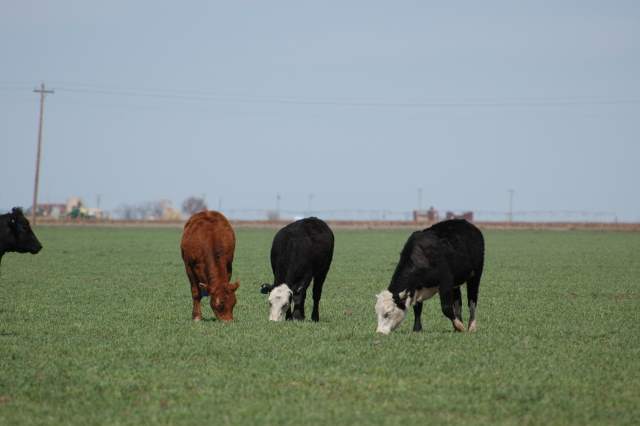Cattle futures: Trading hope or thin air?
January 20, 2016

Whether futures trading began with rice producers in Japan during the 17th century, tulip traders amassed in New York City 100 years later—there are credible assertions for both—or some other time and place, history suggests the elements and mechanics of modern-day futures markets in this country were established by the time of the U.S. Civil War.
Then, as now, the underlying notion of futures markets is to provide commodity buyers and sellers with a way to manage price risk. In the case of agriculture, the need stems from the fact that commodities are mostly harvested in a narrow window, some distance in time and geography way from the ultimate consumer of the commodities or products made with them.
How well the futures market accomplished this mission, and who is allowed to help determine the price, has created virulent discussion since the beginning.
As Steve Fraser explains in his book, Wall Street, a Cultural History, “The explosion in the world market for agricultural products also encouraged well-organized speculation in the prices of their future delivery. Commodity exchanges flooded with real and rumored information about the fate of far-off granaries, and conducted daily auctions of far more agricultural goods than were actually coming off of the farm. By the turn of the century (19th), transactions on the commodity exchanges of New York and Chicago’s famous ‘Pit’ exceeded annual harvests by a factor of seven. Prices fluctuated wildly, often without apparent rhyme or reason. Nebraska wheat farmers certainly couldn’t figure them out—nor, often enough, could the shrewdest initiates into the mysteries of the ‘Pit’, however they might delude themselves to the contrary.”
Anyone trying to use cattle futures to manage price risk the past couple of years, especially Feeder Cattle contracts this past year, understands too well the wide and wild price fluctuations without apparent rhyme or reason.
“There is some concern by industry professionals and analysts that the feeder cattle market trade is far removed from the fundamentals in the market,” says Andrew P. Griffith, agricultural economist at the University of Tennessee, in his market comments last week. “Feeder cattle futures are very thinly traded relative to many of the other futures contracts being traded, which can induce increased volatility and make hedging difficult.
“In other words, there are not a lot of contracts being traded and one or two entities trading large numbers of contracts can shift the price and the shift may not have anything to do with cattle market fundamentals. This is a situation where potential hedgers should remain cautious when utilizing the futures market to hedge the purchase and sale of feeder cattle,” Griffith says.
Moreover, high-frequency electronic trading—also known as algorithmic trading—is being mentioned more frequently as a source for such fundamental disassociation, as well as increased market volatility.
“The effectiveness of cattle futures contracts as a viable risk management tool is being called into question due to the concerns over high-frequency trading. In fact, we continue to hear our members question their use of the cattle contracts because the volatility has made them a tool which is more of a liability than a benefit.”
The above comes from a January letter from Philip Ellis, president of the National Cattlemen’s Beef Association (NCBA) and Ed Greiman, chairman of
NCBA’s Cattle Marketing and International Trade Committee. They sent the letter on behalf of NCBA to Terrence Duffy, executive chairman and president of CME Group.
NCBA hosted a December meeting with producer-members to identify ways to address the growing concern of market volatility stemming from high-frequency trading. It included industry traders, economists, and hedgers.
The letter outlines specific areas of concerns and suggestions NCBA is asking Duffy to address. Included among the concerns are: the need to level the playing field for non-electronic traders by implementing a one-second delay between trade actions; the need for CME to release audit trail data that includes firm-level generic identification, and; the need for CME to more proactively identify and report spoofing.
In simple and incomplete terms, spoofing is the illegal practice of submitting buy or sell orders with the intent of immediately cancelling the order before the transaction can take place in an effort to influence price.
Duffy is scheduled to address NCBA’s Cattle Marketing and International Trade Committee during the annual NCBA convention next week.
In the meantime, public comment remains open regarding new rules proposed by CFTC, aimed at responding to the evolution of automated trading. You can find a fact sheet here.
You might also like:
2016 BEEF Seedstock 100 now online
2016 market outlook: Here's what to expect
Want a more efficient cowherd? Start with early-born heifers
Breathtaking photos of winter on the ranch
How to treat lump jaw disease in cattle
BEEF's top 10 most read blogs in 2015
8 strategies for selecting replacement heifers
You May Also Like


.png?width=300&auto=webp&quality=80&disable=upscale)
